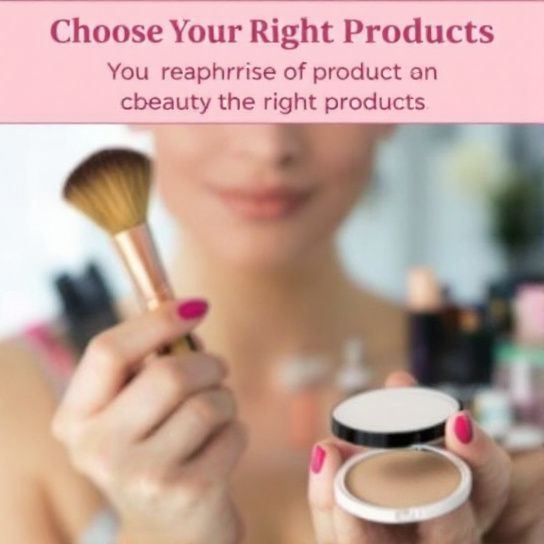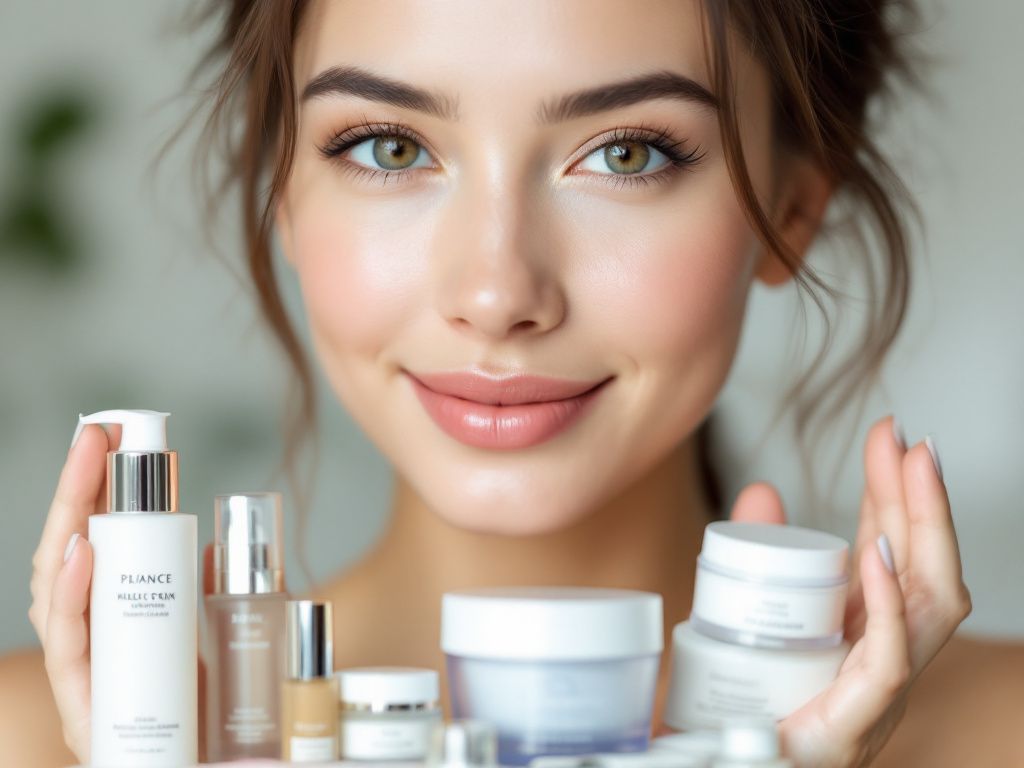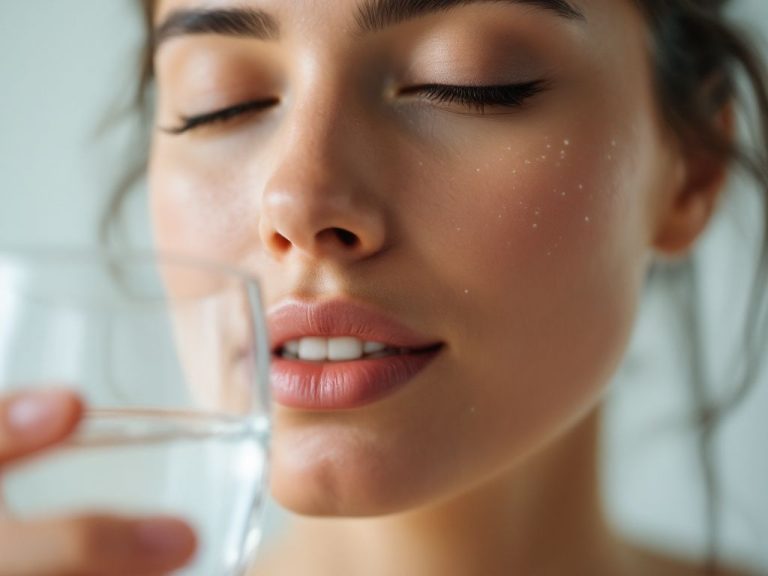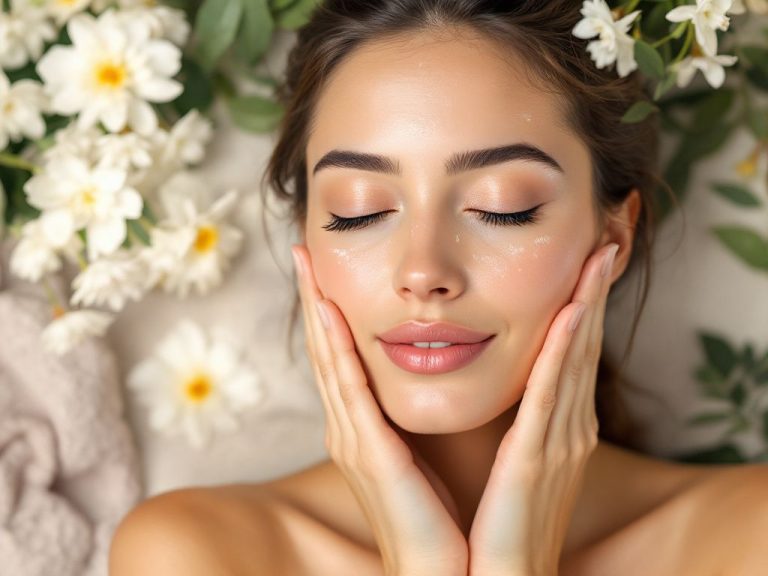Have you ever slapped on your favorite foundation and later realized it had joined forces with your face to betray you? Breakouts? Check. Clogged pores? Check. Frustrated sigh? Oh, double-check! This, my friend, is the dreadful cosmetic acne. Before you think about ditching that feisty faux-flawless look forever, let’s unravel this beauty mystery. Welcome to your comprehensive cosmetic acne guide.
Table of Contents
ToggleWhat is Cosmetic Acne, Anyway?
Cosmetic acne, in simple terms, is that pesky, often sneaky breakout caused by your beloved makeup, skincare goodies, and hair products. When your skin reacts unfavorably to lotions or foundations in the arsenal, it teams up with clogged pores to form small, bumpy annoyances on your face. Mostly, these breakouts have a knack for popping around your chin, cheeks, or forehead—uninvited and unattractive.
Sounds Like Acne. But Why Cosmetic?
Right on—the difference hinges on what triggers it. Traditional acne is a result of genetics, hormones, and, let’s be honest, an uncaring universe. Cosmetic acne, on the flip side, sneaks into our lives because of what’s in our beauty products. We’re talking about comedogenic substances—ingredients that effectively block your pores, spark irritation, and set off breakouts. Kind of a nasty surprise package nestled within your beloved makeup pigments and luscious creams.
What’s the Culprit? Identifying Ingredients and Products
To tackle cosmetic acne, you first need to know thy enemy. Certain ingredients found in cosmetics could be wreaking havoc on your skin. Pay close attention when rifling through your beauty empire. Some notorious pore-clogging suspects include:
- Lanolin: Derived from wool, it’s fantastic for moisture but not so keen on leaving pores alone.
- Isopropyl myristate: Undeniably smooth, yet its pore-clogging potential is noteworthy.
- Cocoa butter and Coconut oil: Moisturizing? Without a doubt! Pore-friendly? Not always!
- Silicones: They fill in fine lines and leave skin feeling smoother but can shield your skin from breathing.
These are just a few. Loads of substances want to chill out in your pores, minus an invitation.
Makeup Effects: It’s Not Just About Acne

It’s not uncommon to undermine the influence of makeup. Sure, our glam tools of the trade curate incredible transformations, but the after-effects can be less than magical. Consider how some foundations and powders can dry out your skin, accentuate fine lines, or contribute to that unflattering flakey look. The product impact isn’t just surface-level—your skin bears the brunt over time if care isn’t taken.
The Burst of Long-Wear Products
Take, for instance, long-wear formulas. They’re stupendous! Stick around all day, through rain, tears, probably a typhoon, but they also might lack breathability, adding to an accumulation where acne loves to party.
Navigating the Cosmetic Aisle: Mastering Your Product Arsenal
Navigating a beauty aisle can be a double-edged sword. While options are abundant, they roil with a clandestine smorgasbord of ingredients, waiting to bewitch your skin.
Select Non-Comedogenic Products
Look for the magic words: non-comedogenic or non-acnegenic. These labels imply a product less inclined to block pores, giving breathability back to your skin. Trusty sidekick choices? Mineral-based powders and lightweight oil-free foundations.
Consider Technical Differences
There’s more to powders than appears at first glance. Loose powders offer a breathier texture compared to compact ones. Little touches like these count!
Be Mindful of Expiration Dates
Although cosmetics shelve conveniently longer, outdated products lose efficacy and might even gather bacteria. Not a risky bet you want on your complexion!
Creating a Skin-Loving Routine
The strategy is to form a routine your skin will swoon for. Dive into steps designed to defend against cosmetic acne:
1. Cleanse Thoroughly

Funny thing, traditional wisdom constantly skims the cornerstone: a well-done cleanse. Thorough double cleanse rules mitigate residual layers of built-up products, dirt, and excess oil.
2. Exfoliate, But Gently
Gentle exfoliation factors in regularly can resuscitate any concealed pores. Once or twice a week is efficient. Overdoing it? That’s pushing your skin’s drama quotient up!
3. Moisturizer, Yes!
Shockingly, oily skin begs for moisture too! Keep a lightweight, non-comedogenic moisturizer ready post-cleanse—comforts parched skin while warding off breakouts.
4. Say No to Untamed Application
Who needs to Claudia Winkleman themselves in makeup layers? Maybe not. A more tailored and equitable approach carries an elegance of restraint—less products, less dodgy eruptions.
5. Choose Products Wisely
Know your skin. Testing new products before diving deeply onboard prevents an unfortunate mismatch. Trust another unsung hero: patch test!
Product Impact: Weighing Texture, Longevity, and Formula
Texture Consideration
The premise behind lightness? Gentle on the skin. Heavy-duty foundations and eyeshadows may excel in coverage but also burden your pores.

Examining Formula
Seek organic blends! Parabens and sulfates tend to irritate finer skin or tempt allergens—a price that, quite literally, skins will revolt over.
Balancing Longevity
Those highly-esteemed smudge-free partners shouldn’t sacrifice wearing comfort. Trail how your skin reacts to elongated product Flowe through tactical rests or transitions.
Preventive and Additional Takeaways
Derailing Factor: Tools!
You might worship your beauty blenders and brushes daily, but are they guarding against or encouraging breakouts? Remember to cleanse tools eagerly and frequently.
Give Skincare a Boost with Supplements
A little nutrient fortification won’t hurt! Incorporating healthful vitamins can bolster natural skin behavioral response. Balance internally echoes beauty externally.
Consult the Knowledgeable Pal
If you’re overwhelmed pivoting strategies alone, consider reaching out to your dermatologist—they spell skin acme with refreshing knowledge and prescription options.
Celebrate Wins
Last and definitely the celebration piece—embrace any sign of improvement with unyielded joy, reinstalling sporadic self-confidence, bit by bit.
Here we are! Hopefully, this cosmetic acne guide serves you as a reliable skincare confessor, offering insights that will accompany your crusade against blemishes sourced in cosmetics. Approach your beauty ritual with mindful caution and respond dynamically when disturbances rise. The serene skin you’ve been aiming for is within reach—just steer the artistry perpetually forward. Trust your gut; your complexion’s on to promising upgrades.
Frequently Asked Questions
What causes acne and how can cosmetics affect it?
Acne is caused by excess oil production, clogged hair follicles, bacteria, and inflammation. Cosmetics can exacerbate acne if they are not chosen carefully. It is important to select oil-free and non-comedogenic products to avoid clogging pores. Properly removing makeup before bed and using a gentle skincare routine can help prevent acne[1][3][5>.
Can I wear makeup when I have acne?
Yes, you can wear makeup when you have acne, but it is crucial to choose the right products. Look for oil-free and non-comedogenic makeup to avoid clogging your pores. Ensure you wash your face twice a day, remove your makeup before bed, and clean your makeup brushes regularly[1][3][5>.
What are the best over-the-counter treatments for acne?
The best over-the-counter treatments for acne include topical solutions with salicylic acid, benzoyl peroxide, and alpha hydroxy acids (AHAs). Salicylic acid dissolves dead skin cells and sebum, benzoyl peroxide targets acne-causing bacteria, and AHAs like glycolic and lactic acid exfoliate the skin to prevent new acne[2][4>.
How can I prevent acne breakouts?
Preventing acne breakouts involves a regular skincare routine, including washing your face twice a day with a mild, non-clogging cleanser. Using products with salicylic acid or benzoyl peroxide, eating a healthy diet, drinking enough water, managing stress, and getting good sleep are also important. Additionally, avoid picking at your acne to prevent scarring[1][2][4>.
References







